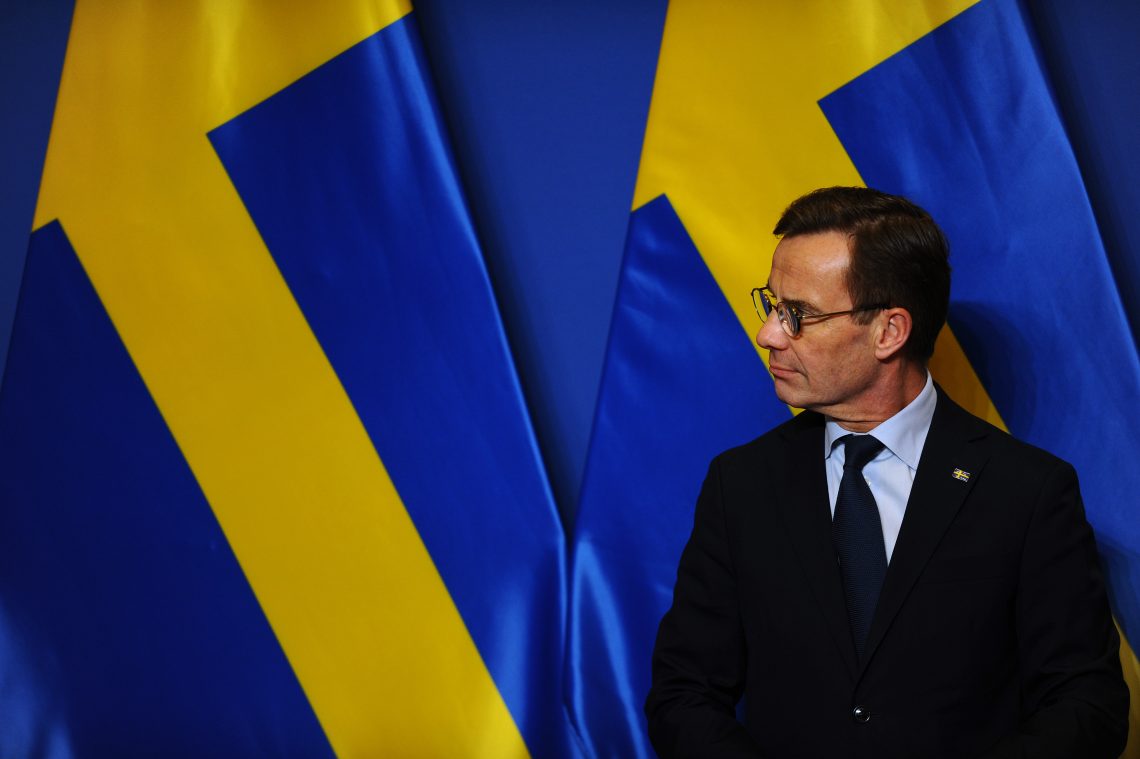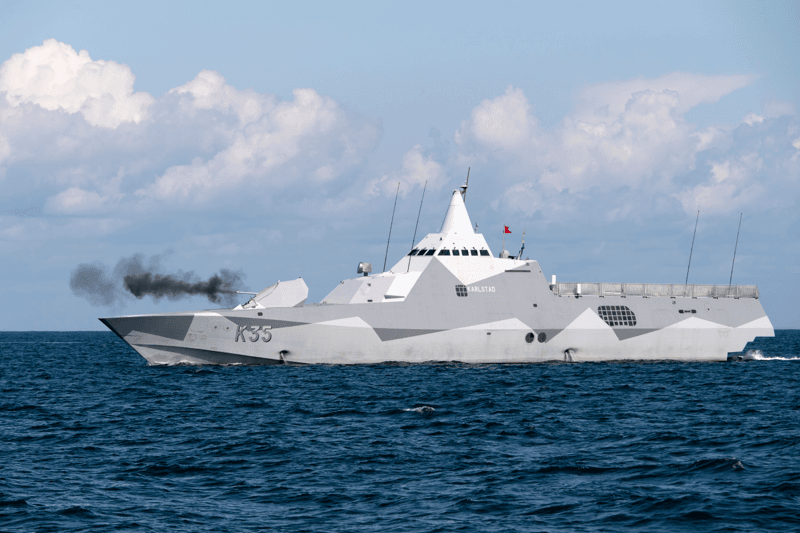What Sweden will bring to NATO
Sweden’s inclusion in NATO will enhance the alliance’s strategic breadth and depth.

In a nutshell
- Stockholm has finally overcome diplomatic hurdles blocking its path to NATO
- The Swedish Armed Forces will bring considerable strategic assets to the alliance
- Sweden could play a key role in the next phase of Russia’s conflict with the West
Russia’s invasion of Ukraine in February 2022 led Sweden to apply for NATO membership in May. Finland also applied at the same time. The alliance swiftly extended an invitation to both countries at its Madrid summit in June, following a trilateral memorandum with Ankara addressing counterterrorism and lifting the arms export embargo to Turkey.
In April 2023, Finland became the 31st NATO member. Sweden, however, encountered more stumbling blocks. In response to Turkish demands, the Swedish government made significant changes to its domestic counterterrorism laws. But, behind the scenes, Turkey made additional demands on matters unrelated to Stockholm. Ankara sought to buy American F-16 fighter jets and advance its integration with the European Union, focusing on customs union reforms and visa liberalization. Discussions in the Turkish parliament began in October 2023, and President Recep Tayyip Erdogan eventually ratified the protocol, endorsing Sweden’s NATO membership following parliamentary approval.
After extensive negotiations and diplomatic efforts, Sweden overcame the final hurdle to joining NATO on February 26, when Hungary’s parliament at last voted to ratify the Swedish bid for membership. Hungary had previously delayed approval, citing Stockholm’s criticisms over the state of Hungarian democracy.
On March 7, Sweden became a full NATO member. This transition enables the country to fully participate in the alliance’s activities, rather than merely observe meetings of the North Atlantic Council and the NATO Military Committee. Active involvement in joint exercises, arms-procurement planning and information exchange will now intensify. This process marks a significant step just ahead of NATO’s 75th anniversary summit in Washington, D.C., in July 2024.
The Nordic region united in NATO
Now that the entire Nordic region is part of NATO, Europe will be able to take greater responsibility for its own security and act as a more powerful defense partner for the United States and Canada. In the north, the melting ice sheet creates new opportunities both for the alliance and its opponents. NATO’s expansion will enhance the continent’s capability to safeguard security in this pivotal region. Together, Sweden and Finland bolster the defense of the Arctic, where Norway and Iceland previously faced the extensive Russian border alone.
A united European presence in NATO also sends a clear signal to Russia that its ambitions to weaken the alliance have failed. This solidarity strengthens NATO’s ability in Europe to confront the Kremlin and tackle continent-wide challenges such as terrorism, cyber threats, corruption and other destabilizing elements.
Sweden as a full NATO member
Sweden binds the Atlantic, Arctic and Baltic areas together. Its presence will provide strategic depth and secure the movements of allied troops for collective defense operations, primarily for the Nordic countries and the Arctic area, but also for the Baltic states and Poland.
Sweden plans to further develop its military capabilities. After years of keeping defense spending at around 1 percent of gross domestic product (GDP), the center-right government has significantly increased funding for military defense, possibly allowing Stockholm to meet NATO’s target of allocating 2 percent of GDP to defense spending as early as 2024.
Efforts to enhance relations with Nordic neighbors and forge multilateral connections, especially with the U.S. and the United Kingdom, with whom Sweden has signed advanced military cooperation agreements, are now being implemented.
New strategic advantages for the alliance
Sweden’s membership in NATO brings several advantages, key among them its comprehensive defense capabilities, strategic influence over the Baltic Sea and a robust defense industry. Expertise in navigating the Baltic Sea, particularly due to the strategic significance of the Swedish island of Gotland, enhances NATO’s control in the region. This is increasingly vital in the context of any potential conflict with Russia.
Sweden has the third-largest navy in the Baltic Sea after Russia and Germany. Together with the air force, it will contribute to securing the transport of troops and materiel across the Baltic Sea.
More on Sweden
Sweden also has mobile amphibious troops specifically designed for speed and flexibility in coastal areas. This could significantly bolster operational effectiveness in difficult-to-navigate archipelagic environments, such as the Estonian coastline.
Sweden and Finland possess capabilities other NATO Baltic Sea nations do not: fast-moving combat boats, hovercraft and coastal hunters that are trained to defend against enemy naval infantry, but are also able to attack. Beyond the Baltic region, only the U.S. and the UK among NATO members maintain strong amphibious forces.
Furthermore, Sweden, thanks to its diesel-powered submarines designed to operate in shallow and challenging waters, is considered to have specialized expertise in hunting enemy submarines.
Facts & figures
Strategic assets of the Swedish Armed Forces
The Swedish Armed Forces are a key component of Sweden’s national defense, providing a comprehensive air, land and sea defense mechanism that aligns with NATO’s strategic interests.
Baltic Sea control
- The Swedish surface fleet consists of seven corvettes, including five Visby-class vessels known for their reduced radar visibility. Plans are underway to enhance air defense capabilities with Sea Ceptor missiles.
- Sweden boasts a substantial submarine fleet within the Baltic Sea region, set to expand from four to five vessels by 2028.
Amphibious expertise
- Sweden’s unique amphibious troops, including fast-moving combat boats and hovercraft, will provide NATO with enhanced flexibility and defensive options in coastal and archipelagic scenarios.
- Swedish diesel-powered submarines are designed for the challenging conditions of shallow and difficult-to-navigate waters, with specialized expertise in anti-submarine warfare.
Air superiority
- The Swedish Air Force operates 94 JAS-39 C/D Gripen jets, with an additional 60 E versions on order, equipped for anti-ship and air-to-air combat.
- Sweden maintains advanced early warning and transport capabilities, including Saab 340 Erieye aircraft (to be replaced by GlobalEye) and C-130H Hercules transport planes.
In terms of combat aircraft, the Swedish Air Force is the largest in the Nordic region. While the fleet’s effectiveness is tempered by maintenance reliant on conscripts and reservists, these aircraft are well-equipped with RBS15 anti-ship missiles, Meteor and AMRAAM air-to-air missiles, offering substantial support to NATO in Baltic confrontations.
However, despite the strength and modernity of the Swedish Armed Forces, there is too little of everything and a need for more refined weapon systems. The navy will have to be strengthened to be able to defend Sweden and the Baltic Sea against a rapidly growing Russian navy. Moreover, Swedish land forces are few in number and it would be a major effort for them to generate and permanently rotate a battalion-sized NATO battlegroup presence abroad; their contribution to the collective defense in this sector will therefore be rather modest.
Sweden’s geostrategic role in NATO
A primary task of Sweden and the other Nordic countries within NATO will be to support the collective defense of Northern European allies, including Denmark, Finland, Norway, the Baltic states and Poland.
The June 2023 Defense Commission report portrays Sweden as a forward base for allied land, sea and air forces, as well as a supply and transit area for NATO. Sweden does not perceive itself as a frontline state, but rather one that provides strategic depth and secures transit routes to defend northern Norway, Finland and the Baltic states. Thanks to the Host Nation Support agreement between Sweden and NATO, allied forces can already use Swedish territory, airspace and territorial waters, although this requires the Swedish government’s approval each time.

Over the years, Sweden has sought to develop cooperation with its Nordic neighbors, first and foremost with Finland. Sweden therefore sees itself primarily as part of the Nordic group in the alliance.
In March 2023, immediately after the full-scale Russian invasion of Ukraine, Sweden, Norway, Finland and Denmark concluded a memorandum to integrate their air forces, which should now be able to act jointly in any situation. The signatories committed to integrate command structures, operational planning, joint monitoring of airspace, training and exercises. Although Sweden’s membership in NATO will enable it to participate fully in its structures and mechanisms, it is expected that Nordic cooperation in the formats developed thus far will continue and that it will remain an important complement to the alliance.
Scenarios
More likely in the near term: Russia increases aggression toward Nordic countries
Russia will be more aggressive towards the Nordic countries, especially Sweden, and has threatened to take both political and military action. Kremlin press officer Maria Zakharova has commented that “abandoning the long-term policy of military non-alignment and joining a group that is openly hostile to Russia is unlikely to strengthen the sense of security among ordinary Swedes.”
Should conflict arise near NATO’s northern borders, the alliance plans to bolster Sweden with additional forces and military resources. However, this will increase the likelihood of drone and automated warfare threats. Russia has explicitly declared that it would target Sweden with such unmanned systems if it joins the alliance.
Additionally, Russia has stationed nuclear Iskander-M missiles in Kaliningrad, just 300 kilometers from Sweden. Researchers believe that after modifications, this type of cruise missile could achieve a range of up to 2,000 kilometers. Consequently, from its position in Kaliningrad, the Iskander-M missile system could potentially target extensive areas of Europe.
More likely in the long term: Russia attacks a NATO country
Russia could attack a NATO country – the Baltic countries are most at risk, but perhaps also Sweden. Ground attacks in the near term are unlikely since Russia will lack operational capabilities. The more likely scenario involves indirect warfare tactics, such as airstrikes and the use of drones. Despite sanctions, Russia’s continued technology imports from China enable it to potentially develop and mass produce advanced weaponry, including new types of cruise- and ground-based drones.
In the coming years, it is expected that Russia will rebuild its military capabilities, raising the possibility of renewed aggression against Ukraine or other nations. The future strength of NATO and Ukraine – and conversely, Russia’s position – could significantly shift depending on the results of the upcoming U.S. presidential election.
For industry-specific scenarios and bespoke geopolitical intelligence, contact us and we will provide you with more information about our advisory services.









